 Mobile Tutorial
Mobile Tutorial
 Mobile News
Mobile News
 Getting started with Xiaomi Mi Pad 6S Pro: Mobile productivity Xiaomi really puts its heart into it
Getting started with Xiaomi Mi Pad 6S Pro: Mobile productivity Xiaomi really puts its heart into it
Getting started with Xiaomi Mi Pad 6S Pro: Mobile productivity Xiaomi really puts its heart into it
Over the years, with its more portable body size and high energy consumption ratio brought by Arm processors, "mobile productivity" has become one of the main directions of tablet computers. With many product iterations and concepts With the leap in performance, manufacturers and users seem to have reached a consensus. For tablet computers to achieve more complete "mobile productivity", it is not only necessary to upgrade the hardware, but also to provide support and integration in the software. In order to achieve a better user experience.
The Mi Pad6SPro12.4 that Xiaomi has just officially released is such a product. This time I got the 16GB 1TB top-end keyboard set. After experiencing it for the next week, my feelings are: From hardware to software, Xiaomi I really paid attention this time.
Before the experience officially begins, let’s take a look at the configuration of Xiaomi Pad6SPro12.4:
SoC: second generation Snapdragon 8 processor
Memory: 8GB/ 12GB/16GB/LPDDR5X
Storage: 256GB/512GB/1TBUFS4.0
Screen: 12.4-inch/LCD/3K/144Hz/100�I-P3
Camera: Front-centered 32MP/rear 50MP main camera 2MP depth of field
Battery and charging: 10000mAh, 120W fast charge
Interface: USB3.2Gen1
OS: XiaomiHyperOS
Others: 6 speakers/support Wi-Fi7
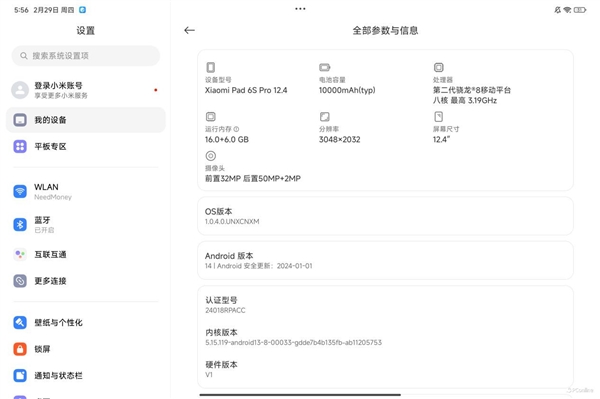
1. Comprehensive hardware design for mobile office
Try Xiaomi Mi Pad 6SPro12 .4 In the past week or so, I have spent half of my time working in the same city, so I have a deeper experience and understanding of how Xiaomi Pad6SPro hardware can benefit mobile office.
The first is this large 12.4-inch screen. The size of mainstream tablet computers is mostly about 11 inches. Regardless of the size increase of about 1.4 inches, it is really a lot of things in exchange.
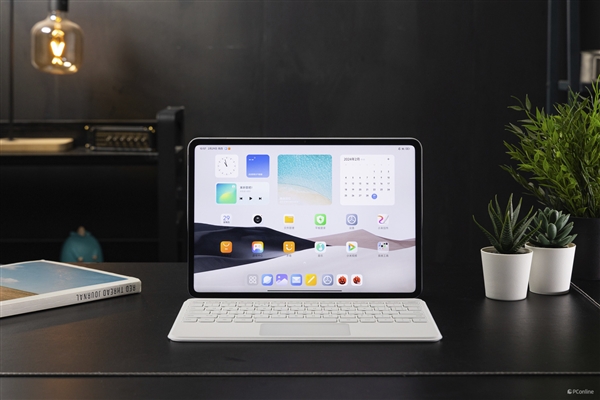
The larger screen allows me to work in a normal sitting posture, just like using an ordinary laptop, plus the keyboard supports up to 55° angle adjustment Damn, I don’t have to bend my neck or back all the time in order to see the screen clearly when I’m working, and it’s much easier to record long meetings.

The larger screen size brings not only this but also the size of the official keyboard cover compared to the previous 11-inch Xiaomi 5Pro In addition, the keycaps are visibly larger. For me, who has been using a 14-inch laptop for work before, I don’t feel any discomfort when I directly switch to the Xiaomi Pad6S Pro keyboard for work. Accidental typing rarely occurs. .
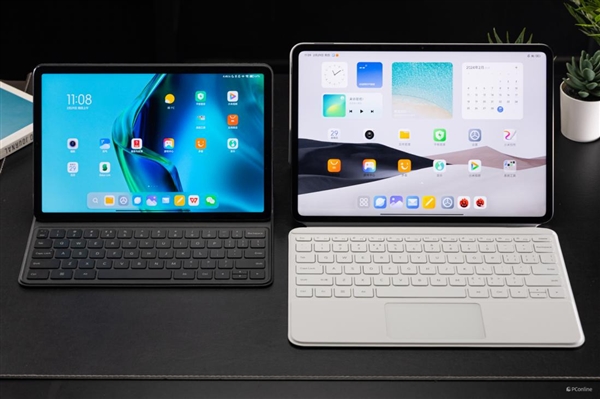
#The keyboard key travel of the keyboard cover is indeed not very high. This is also limited by its thickness. After all, it is a "tablet" keyboard cover, which is impossible. It's made too thick, but it rebounds very quickly and can support long-term coding.
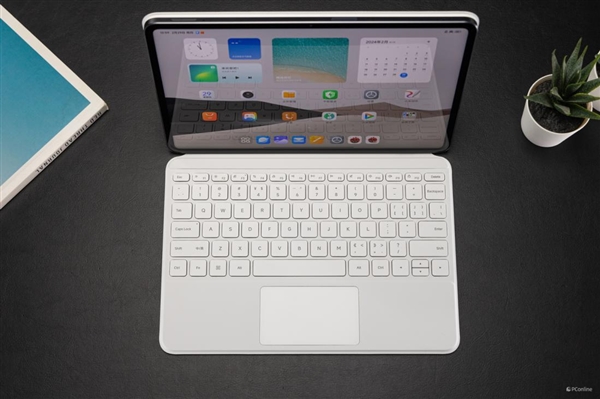
The other thing is the touchpad. I think that if a tablet computer is to talk about the so-called "productivity", then the touchpad is absolutely indispensable.
If you still need to touch the screen with your fingers to operate it at work, it goes against the usage habits of PC. With the touchpad, the operating experience can be infinitely close to that of PC in theory. The touchpad on Xiaomi Pad6S Pro can be pressed across the entire area. The area of the touchpad is not large, but you really can’t ask for more. It is enough for use.
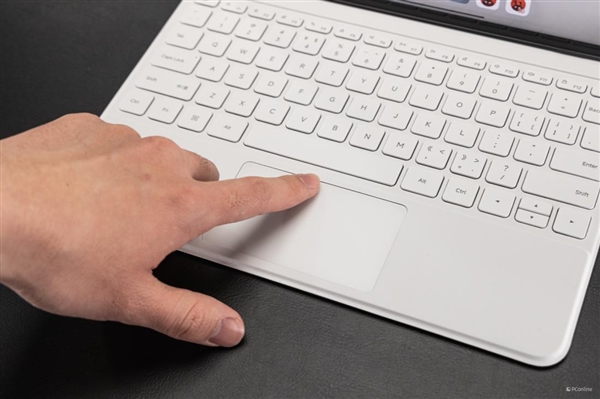
Let’s return to this screen. Today, when OLED is so popular, flagship-level tablets like Xiaomi Pad6S Pro insist on using LDC screens. This is why I like Xiaomi so much. One of the main reasons for Pad6SPro.
My eyes are a little sensitive to OLED screens. Although more and more OLED screens now support higher-frequency PWM dimming, they are not as practical as an LCD screen. I often face the screen for a day. For me, LCD is something I really need.
In other parameters, the maximum 144Hz 7-speed adaptive refresh rate, 3048*2032 resolution, support for 100°I-P3, and 12bit color depth, the visual experience is nothing to say, and the system also has Supports switching of color style and color gamut.
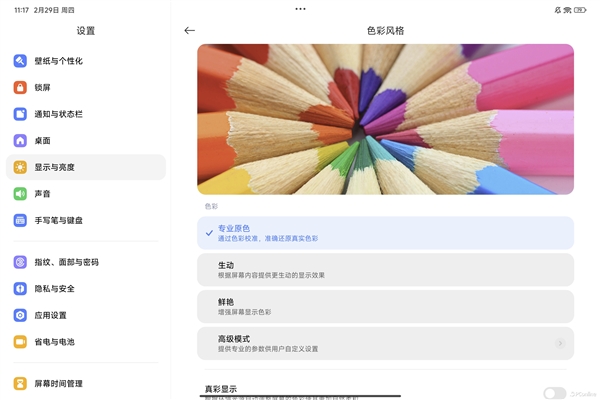
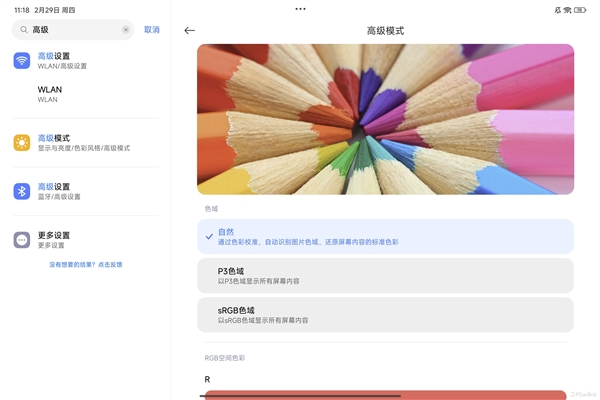
In the screen brightness options, after turning off automatic brightness adjustment, the "Sunlight Mode" option will appear. This option will activate the screen's maximum brightness of 900nit and prevent the screen brightness from automatically adjusting. to a relatively low level. This allows me to see the screen clearly when working in strong light environments such as in the car or by the window in a cafe. For an LCD screen, the experience is perfect.

After talking about the benefits that large-size screens bring to mobile office, let’s look at other hardware.
SoC is Snapdragon's 8Gen2, the previous generation's flagship platform, so there is no need to worry about performance. Here we measured the AnTuTu running score, which is more than 1.54 million, the CPU is around 340,000, and the GPU is 57 It’s about 10,000, and it benefits from the heat dissipation area brought by the larger body size, plus the very good energy efficiency ratio of 8Gen2 itself.
When running the benchmark, basically only the upper middle part of the back is a little warm. In daily use, you basically don’t feel any heat where you hold it with both hands, so you don’t have to worry about using the whole body. The covered keyboard cover may overheat or affect performance if used for a long time.
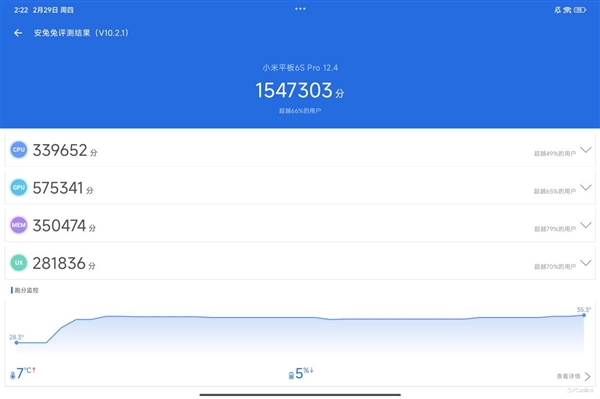
Finally, let’s talk about battery life and charging. Xiaomi Pad6SPro is equipped with a 10000mAh large-capacity battery. When I used an ordinary laptop to go out to work, I have always been impressed by the battery life. Basically, I will only use my laptop when I have no choice but to use it to complete my work.
Even so, the weak battery life of the X86 platform makes me full of battery life anxiety all the time, and there are really embarrassing situations of running out of battery. Coupled with the slow charging speed, the battery life problem of my own equipment has always been troubled. Holding me.
But during the period of using Xiaomi Pad6SPro to go out to work, the problem of battery life anxiety has been greatly alleviated. First of all, the inherent battery life advantage of the Arm platform, which is needless to say, and secondly, the large-capacity battery of 10,000mAh. It can basically sustain the long hours of keeping the screen on for working and writing all day long, as well as occasionally watching videos and entertainment, and the battery reserve is quite good.
The most important thing is that this generation of Xiaomi Pad6SPro supports 120W fast charging. Every time I start charging from about 20% of the power, it can be fully charged in half an hour. After all, fast blood recovery is also important for battery life. One ring.
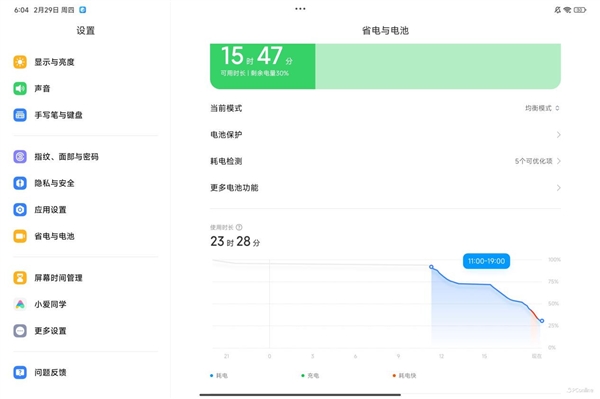
From about 11 o'clock to 18 o'clock, 30% of the battery is left after intensive use
Generally speaking, the hardware facilities of Xiaomi Pad6SPro are not lacking. The stacking of purposes really made me feel their advantages in the "mobile office" scenario, and also brought me a brand new mobile office experience, eliminating my battery life anxiety.
But as mentioned at the beginning of the article, for tablet computers, if you want to have an office experience close to that of a PC, the hardware is only part of it, and the software and system are also crucial. Let’s talk about this below. part of the experience.
2. Software and system, from Windows to HyperOS seamlessly
There is no familiar process and no learning costs. This is my biggest feeling when working on Xiaomi Pad6SPro.
Xiaomi Pad6SPro is equipped with the new HyperOS right out of the factory. The first is the adaptation of the touchpad in the keyboard cover. The operating gestures are basically the same as Windows PC, such as sliding the page with two fingers, returning to the desktop with three fingers, and sliding left and right to switch. Applications etc.
When using the touchpad, there are also some small designs that are convenient for tablet operation. For example, when you click on the ??? above the application to perform operations such as split screen or full screen, the cursor will automatically snap to the buttons below. options to perform these operations more quickly.
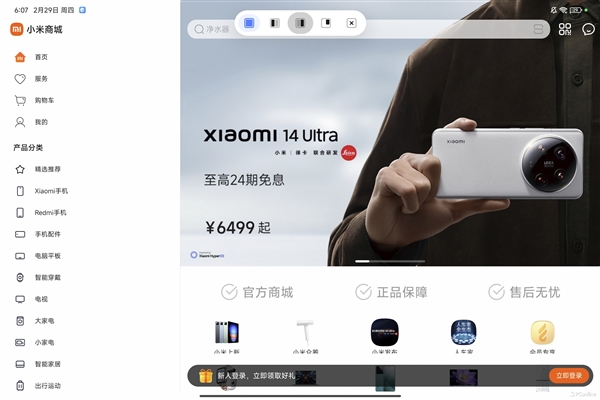
The split screen/full screen option cursor above will automatically adsorb
App split screen supports half screen split screen and two-thirds split screen. The small window mode also supports window size adjustment, just like windows, you can adjust the window size by dragging directly on the edge of the window.
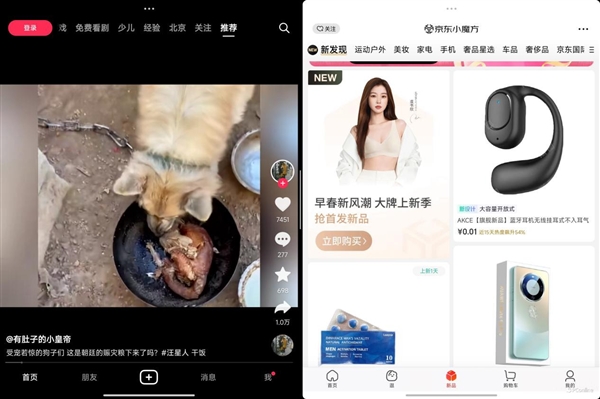

After sliding down the control bar, HyperOS also provides a "workbench" mode. In this mode, all Xiaomi Pad6SPro applications will enter the Dock bar below the desktop, and the applications will be opened in window mode by default. In addition, we You can adjust the window size at will, and the entire interface and user experience are a bit like Mac.
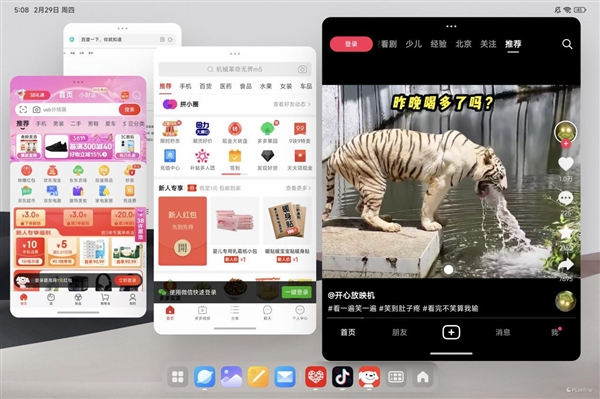
In this way, in terms of operation logic, the default mode is more like Windows, and the workbench mode is more like MacOS. Xiaomi Pad6SPro provides users with different usage habits. It can be said that a lot of effort has been put into making the operation logic more adaptable.
In terms of applications, WPSOffice is the application that I focus on. It is also the application that I use the most every day no matter what platform it is on. Xiaomi also emphasized it on the business details page and press conference. PC-level WPSOffice adapted for Xiaomi Pad6SPro.
In terms of interface, function, and operation logic, whether it is Word, Excel or PPT in PC-level WPS, they all restore the WPS on PC with high precision. They are almost exactly the same. If you just rely on screenshots, There is no way to tell whether this is the PC-level WPS Office running on Xiaomi Pad6S Pro or the PC version of WPS Office. If you have to be picky, it means that the current PC-level WPS Office is not yet connected to WPS AI.
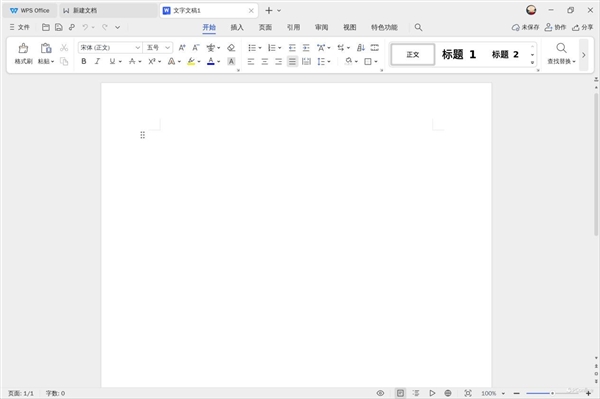
However, it is somewhat regrettable that the current PC-level WPSOffice does not support split-screen or windowing in the default mode. However, you can freely modify the windows in the workbench mode. Zoom in or out or full screen, and cooperate with other applications to achieve higher productivity.
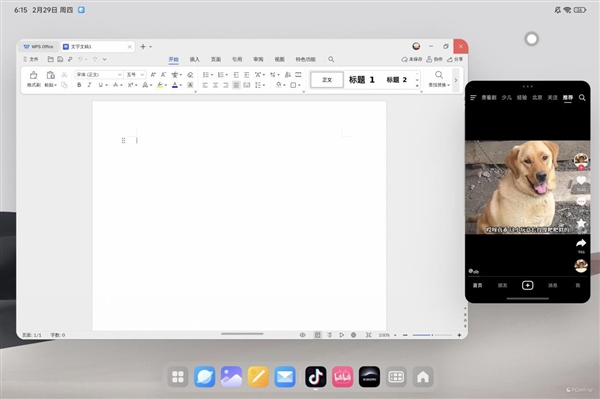
The last thing I want to talk about is the function of wireless display. Xiaomi Pad6SPro supports wireless connection as a secondary screen for Windows computers. After turning on this function on the tablet , click the Windows key K key in Windows to open the connection, and the screen projection on the tablet not only supports full-screen display, but also windowed display to adjust the window size, and users can call it according to their own needs.
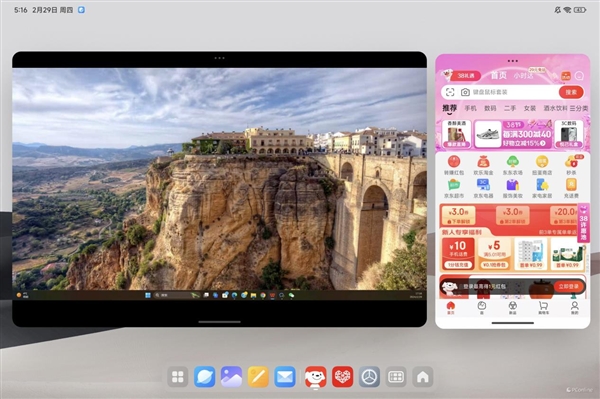
When connected to the same wireless network, the delay of the wireless monitor is smaller and the clarity is OK. It is sufficient for office use to improve productivity.
Xiaomi Pad6SPro provides two operating modes according to the usage habits of different users. It has comprehensive functions and is easy to get started. It does not require too much learning cost and familiarization time to get started, and it is between Windows and HyperOS. I didn’t feel any discomfort when switching. The adaptation of PC-level WPS software and the high degree of liberalization of application windows are the keys to using Xiaomi Pad6SPro to work efficiently.
3. Written at the end
In fact, when discussing the "mobile office productivity" of tablet computers, we can see that many discussions have a negative attitude, but in fact, for me For a writer like this, a tablet computer can help me solve a lot of problems.
The Snapdragon 8Gen2 flagship SoC on Xiaomi Pad6SPro can fully meet my performance needs. The 16GB of memory also allows me to store a large number of applications in the background. The 12.4-inch high-brightness LCD screen and matching keyboard cover It allows me to code and work more comfortably. The most important thing is that Xiaomi Pad6SPro's high battery life and quick blood replenishment eliminates my anxiety about battery life when I am away from home.
At the software and system level, special adaptation and special optimization make the application easier to use, leaving the decision-making power of how to use the application to the users themselves, giving users a higher degree of freedom. , let users do whatever they feel comfortable with.
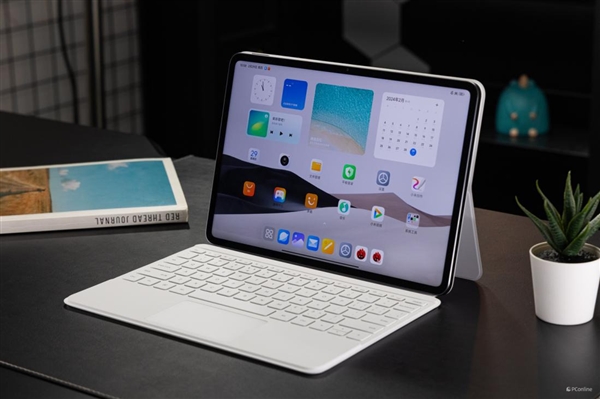
At the same time, Xiaomi Pad6SPro is also an important part of Xiaomi’s “People and Cars” ecosystem. During the press conference, multiple usage scenarios in Xiaomi cars were also shared. , the "Xiaomi Auto Expansion Screen" application has also been prepared in the system. It seems that the official release of Xiaomi SU7 is not far away.
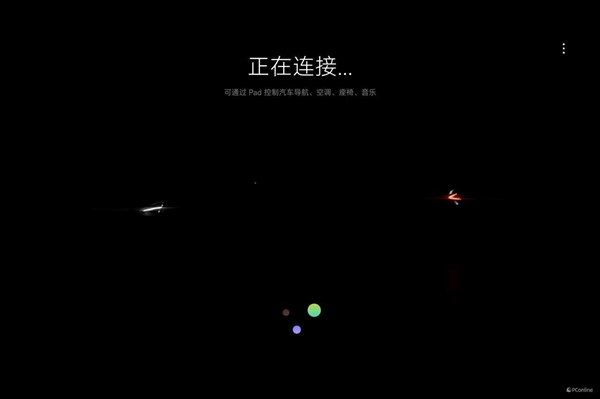
If you, like me, are a person who often needs to go out to work, or have more frequent coding needs, or have higher battery life requirements, then Xiaomi Pad6SPro is definitely for you An efficient productivity tool.
The above is the detailed content of Getting started with Xiaomi Mi Pad 6S Pro: Mobile productivity Xiaomi really puts its heart into it. For more information, please follow other related articles on the PHP Chinese website!

Hot AI Tools

Undresser.AI Undress
AI-powered app for creating realistic nude photos

AI Clothes Remover
Online AI tool for removing clothes from photos.

Undress AI Tool
Undress images for free

Clothoff.io
AI clothes remover

AI Hentai Generator
Generate AI Hentai for free.

Hot Article

Hot Tools

Notepad++7.3.1
Easy-to-use and free code editor

SublimeText3 Chinese version
Chinese version, very easy to use

Zend Studio 13.0.1
Powerful PHP integrated development environment

Dreamweaver CS6
Visual web development tools

SublimeText3 Mac version
God-level code editing software (SublimeText3)

Hot Topics
 1381
1381
 52
52
 How to convert deepseek pdf
Feb 19, 2025 pm 05:24 PM
How to convert deepseek pdf
Feb 19, 2025 pm 05:24 PM
DeepSeek cannot convert files directly to PDF. Depending on the file type, you can use different methods: Common documents (Word, Excel, PowerPoint): Use Microsoft Office, LibreOffice and other software to export as PDF. Image: Save as PDF using image viewer or image processing software. Web pages: Use the browser's "Print into PDF" function or the dedicated web page to PDF tool. Uncommon formats: Find the right converter and convert it to PDF. It is crucial to choose the right tools and develop a plan based on the actual situation.
 A new generation of thousand-yuan magic machine! Redmi Note 14 series joins the Internet: supports up to 90W fast charging
Sep 02, 2024 pm 12:44 PM
A new generation of thousand-yuan magic machine! Redmi Note 14 series joins the Internet: supports up to 90W fast charging
Sep 02, 2024 pm 12:44 PM
According to news on September 2, three new models of the Redmi Note14 series have been launched on the Internet, supporting up to 90W fast charging. According to various sources, this series will be released this month, focusing on the thousand-yuan market. 1. There are three models in the series, including RedmiNote14, RedmiNote14Pro and RedmiNote14Pro+. They are respectively equipped with Qualcomm Snapdragon 7sGen3, Dimensity 7350, and second-generation Snapdragon 7s. The Redmi Note14Pro series uses a 1.5K curved screen. This is Redmi’s first curved screen model this year and is consistent with the screen form of the previous generation Note13Pro+. RedmiNote14Pro series appearance: large-area centered three-camera solution camera Deco
 Apple and Huawei both wanted to make a buttonless phone, but Xiaomi made it first?
Aug 29, 2024 pm 03:33 PM
Apple and Huawei both wanted to make a buttonless phone, but Xiaomi made it first?
Aug 29, 2024 pm 03:33 PM
According to a report from Smartprix, Xiaomi is developing a buttonless mobile phone codenamed "Suzaku". According to this news, this mobile phone codenamed Zhuque will be designed with an integrated concept, use an under-screen camera, and be equipped with Qualcomm Snapdragon 8gen4 processor. If the plan does not change, we are likely to see its arrival in 2025. When I saw this news, I thought I was back in 2019 - at that time, Xiaomi released the Mi MIX Alpha concept phone, and the surround-screen button-less design was quite amazing. This is the first time I have seen the charm of a buttonless mobile phone. If you want a piece of "magic glass", you must first kill the buttons. In "The Biography of Steve Jobs", Jobs once expressed that he hoped that the mobile phone could be like a piece of "magic glass".
 Honor Magic V3 big upgrade! Support Amap access to satellite communications
Sep 02, 2024 pm 01:54 PM
Honor Magic V3 big upgrade! Support Amap access to satellite communications
Sep 02, 2024 pm 01:54 PM
According to news on September 1, today, Honor MagicV3 received an important upgrade to MagicOS, which brought many new features and optimized experience. 1. In terms of satellite communications, Honor MagicV3 will support Amap’s access to satellite communications. Users can also initiate help through the “Satellite Help” function of Amap in a non-network environment. However, this function requires using a China Telecom card to activate the direct satellite connection service for mobile phones and upgrading the Amap App to version 15.0 or above. In terms of cameras, the imaging effects of the front camera, portrait and night scene modes in some scenes have been optimized to improve the photography experience. In terms of display, this upgrade improves the eye protection experience of the mobile phone screen and enhances the stability of the screen-off display scene. In addition, this update also improves the system
 Dimensity 9400 is the most powerful flagship! Vivo X200 Pro detailed parameters exposed
Sep 04, 2024 am 06:47 AM
Dimensity 9400 is the most powerful flagship! Vivo X200 Pro detailed parameters exposed
Sep 04, 2024 am 06:47 AM
According to news on September 4, today, blogger Digital Chat Station exposed the detailed configuration of vivoX200Pro. Vivo Dust-proof and waterproof, supports single-point ultrasonic fingerprint. Compared with the previous generation vivoX100Pro, the screen, performance, and images of the X200Pro have been significantly upgraded, especially in terms of imaging. This is the first time that vivo has equipped the Pro version with a 200-megapixel periscope telephoto lens. The X100Ultra ultra-large cup released by vivo previously used a 200-megapixel periscope telephoto lens.
 Xiaomi Redmi Note 14 mobile phone passed FCC certification: pre-installed with Thermal HyperOS and equipped with 33W charger
Sep 02, 2024 pm 02:52 PM
Xiaomi Redmi Note 14 mobile phone passed FCC certification: pre-installed with Thermal HyperOS and equipped with 33W charger
Sep 02, 2024 pm 02:52 PM
Thanks to netizen Wu Yanzu from South China for submitting the clue! According to news on September 2, the international version of Xiaomi Redmi Note 14 with model number "24094RAD4G" has now passed FCC certification, revealing some configuration information of the machine. FCC certification information shows that Xiaomi Redmi Note14 mobile phone is pre-installed with ThePaper HyperOS1.0 system, supports Wi-Fi, Bluetooth, LTE and 5GNR frequency bands, and is equipped with a 33W charger. Xiaomi RedmiNote14 series mobile phone information update Xiaomi RedmiNote14 has passed IMEI certification and supports 45W fast charging (the actual charging rate is unknown). It is equipped with MediaTek Dimensity 6100+ processor. Xiaomi RedmiNote14Pro internal code name: "Ame
 LCD iPhone becomes history! Apple will be completely abandoned: the end of an era
Sep 03, 2024 pm 09:38 PM
LCD iPhone becomes history! Apple will be completely abandoned: the end of an era
Sep 03, 2024 pm 09:38 PM
According to media reports citing sources, Apple will completely abandon the use of LCD (liquid crystal display) screens in iPhones, and all iPhones sold next year and beyond will use OLED (organic light-emitting diode) displays. Apple first used OLED displays on iPhoneX in 2017. Since then, Apple has popularized OLED displays in mid-to-high-end models, but the iPhone SE series still uses LCD screens. However, iPhones with LCD screens are about to become history. People familiar with the matter said that Apple has begun ordering OLED displays from BOE and LG for the new generation iPhone SE. Samsung currently holds about half of the iPhone OLED display market, LG
 Xiaomi Redmi 14C mobile phone revealed to be released on August 31: 6.88-inch 90Hz screen, 5160mAh battery, 50MP main camera
Aug 24, 2024 am 11:07 AM
Xiaomi Redmi 14C mobile phone revealed to be released on August 31: 6.88-inch 90Hz screen, 5160mAh battery, 50MP main camera
Aug 24, 2024 am 11:07 AM
According to news on August 24, technology media 91Mobile published a blog post yesterday (August 23), breaking the news that Xiaomi will release the Redmi14C smartphone on August 31, which will be available in three colors: green (should be plain leather), black and blue. Xiaomi Redmi14C is equipped with an Oreo circular camera module on the back, equipped with 2 camera sensors and 1 LED flash, 50-megapixel main camera, and the volume and power buttons are on the right side. Attached is the promotional picture of Xiaomi Redmi14C as follows. You can see that the front is equipped with a water drop-shaped groove. Since the product is positioned at the mid-to-low end, the frame on the chin part is wider. In terms of specifications, Xiaomi Redmi14C mobile phone is equipped with a 6.88-inch FullHD+ resolution screen with a refresh rate of 90H



